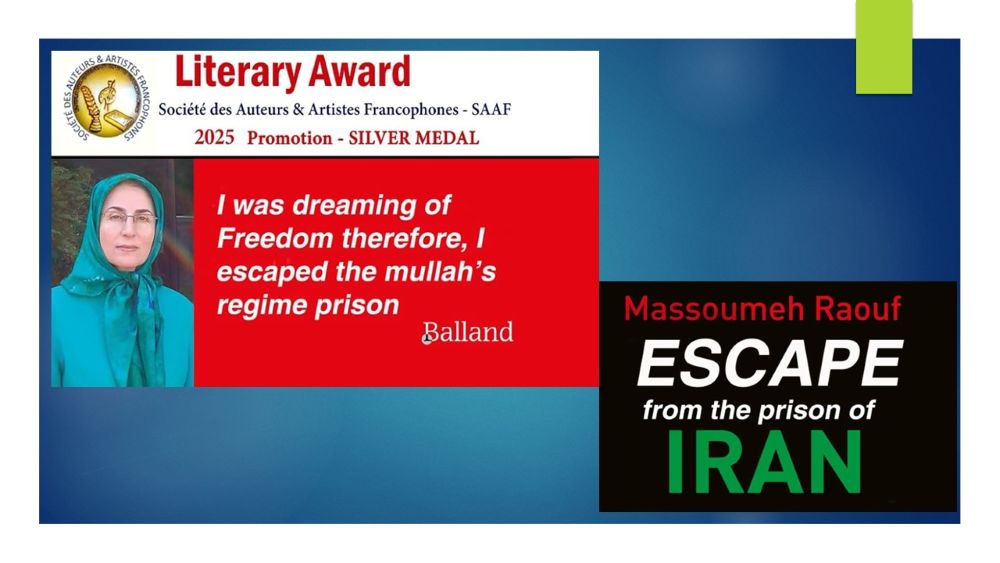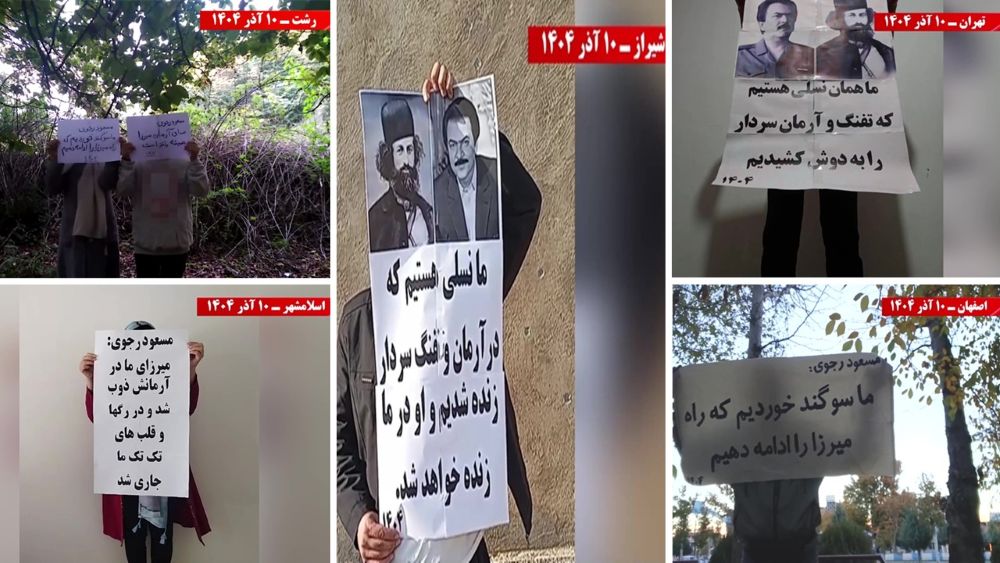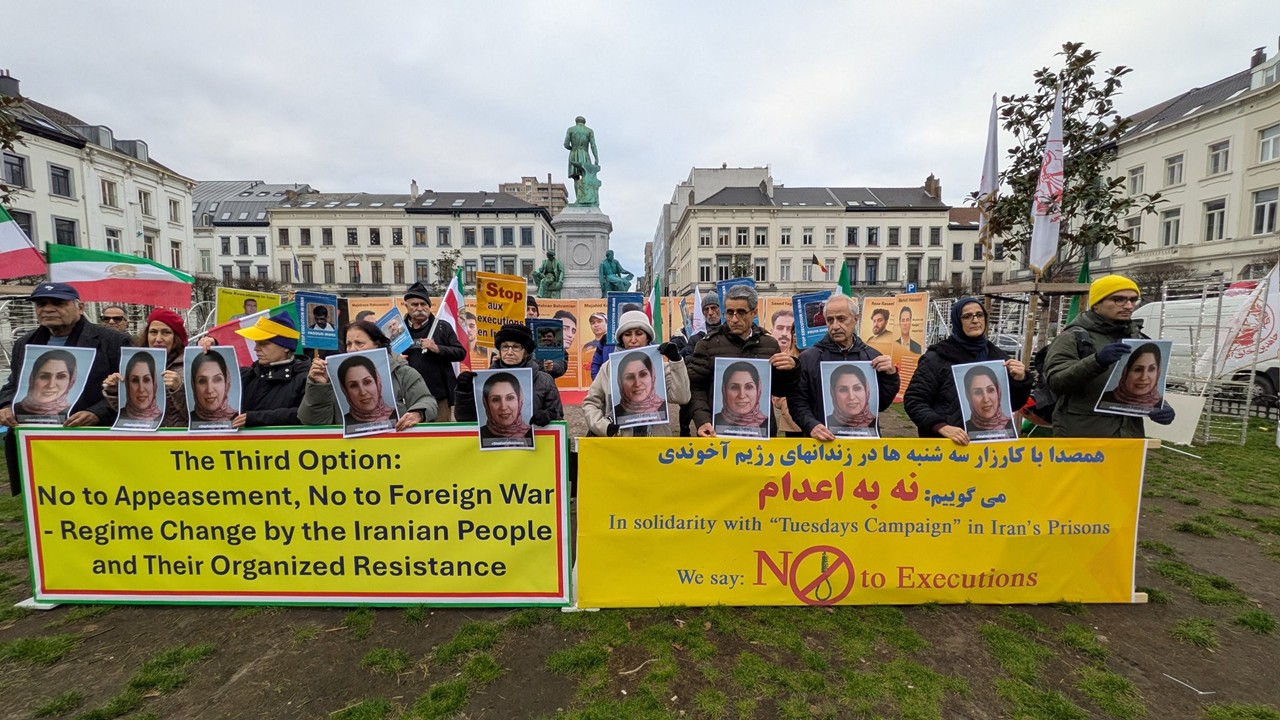Maryam Rajavi’s route map for free Iran
At the beginning of 2018, when popular protests spread across Iran, and the people chanted slogans of “Death to Khamenei”, “Death to Rouhani”, and “Reformist, hard-liner, the game is over”, the Iranian regime tried to quell the uprising with the iron fist. Most European countries and those who still had an eye on the policy of appeasement alleged that the under controlled protests were not against the rule, but people want to solve economic problems.
But Mrs. Maryam Rajavi, the president-elect of the NCRI, in an interview printed on the Wall Street Journal, made it clear that the situation would not return to the previous phase, and the protests were a turning point in the Iranian people’s struggle against the mullahs.
On June 30, 2018, Mrs. Maryam Rajavi announced the signs of the phase of the Iran regime’s overthrow, and the inevitable victory of the democratic revolution for a free Iran in her speech at the Free Iran Gathering in Paris. At that time, those who knew enough about the internal situation in Iran were well acquainted with Mrs. Rajavi’s words and praised her for his clear remarks and excellent leadership in leading the movement for a free Iran.
Recently, that a popular uprising resumed in Iran, and people in different cities chanted slogans against corrupt leaders in Iran and called for the overthrow of the mullahs, the signs of change that Mrs. Maryam Rajavi had mentioned emerged.
The accurate analyses of the complicated political and social situation in Iran indicate Mrs. Rajavi’s deep insight of the realities of Iran which is based on the experiences of years of struggle against the theocratic regime ruling Iran.
Mrs. Maryam Rajavi announced the signs of the overthrow of the mullahs in five themes:
Maryam Rajavi’s route map for free Iran
The leverage for the overthrow
Since the January uprising, the tip of the volcano of change and the regime’s overthrow in Iran has emerged. The triumph of Iran’s democratic revolution, without the sheikh (mullahs) and the Shah, are now looming on the horizon. Through their uprisings and relying on resistance units, the Iranian people are employing the leverage they need to topple this regime.
How and where can we discover these realities?
First, owing to the presence of the Resistance movement, the charade billed as the existence of a “solution” within the religious fascism has become null and void.
The rebellious population and youth have rejected both factions of the regime. These are the same fearless youth who have chosen the path of fighting on, going on the maximum offensive, and waging resistance regardless of the cost.
The persistence of the uprising and the protest movement despite maximum suppression
The second sign that the era of the regime’s overthrow has arrived is that for the past six months the Iranian people have waged an uprising and a protest movement despite the imposition of maximum suppression, despite the so-called “suicides” of the detainees in the mullahs’ prisons and despite daily arrests and executions designed to intimidate the public.
The workers at Haft-Tapeh sugar cane factory resumed their uprising. Then, the workers at Ahvaz steel factory, and farmers in Isfahan rose up. Worshipers in Isfahan turned their backs on Khamenei’s Friday prayer leader and chanted: “My back to the enemy and facing the nation.”
Isfahan Province was still on edge when our Arab compatriots in Khuzestan, especially in Ahvaz, rose up. Then came Kurdistan as the lengthy strike in Baneh aroused everyone’s admiration. Then, on the roadmap to overthrow, a new role model emerged: Kazerun, the city of uprising, fire and blood, with audacious women, who alongside their brothers and rocks in hand, repelled the heavily-armed enemy forces, imitating the resistance we saw at Camp Ashraf.
At that moment, the uprising accelerated. The strike by toiling truck drivers and owners in 285 cities and in 31 provinces shook the regime to its foundation for 12 days.
Teachers, retirees, defrauded investors, and workers of hundreds of manufacturing units rose up day after day. And last week, the Tehran bazaar rose up and ignited an uprising in Tehran and other cities.
Iran revolted once again, with all its children, with all its nationalities and ethnicities.
Truly, where is the destination? The answer is: A free Iran, through the eradication of all the facets of dictatorship and plundering policies, and by bringing down Khamenei from power.
An explosive and irreversible situation
The third sign of the inevitable overthrow of the ruling religious fascism is that social tensions and economic crises, especially high prices, unemployment, poverty, and inequality have reached a critical mass. Everyone senses the explosive state of society. And the mullahs can offer neither a solution nor are willing or able to resolve the problems.
The velayat-e faqih (absolute clerical rule) lacks all legitimacy. Khamenei’s standing has plummeted dramatically. The regime has run out of cash. The Revolutionary Guards and the unpopular Bassij forces have been facing defections. The masquerade of “moderation” designed to preserve the regime has now been unmasked. And the regime in its entirety is drowning in the abyss of internal feuds and bickering.
And now, it is the regime’s own advocates who are confessing that there are two rival governments at the apex of the ruling establishment. One regime advocate openly said: “We are getting close to a watershed moment that will see the ouster of one of the two governments, and either the hidden government will take full control of administering the affairs, or it will be forced to relinquish portions of its authority.”
The collapse of the appeasement policy
The fourth sign of the phase of the regime’s overthrow is that internationally, the mullahs have lost the most important backer of the policy of appeasement, namely the United States. The international shield safeguarding the regime has fallen by the way side. The mullahs have practically lost their JCPOA.
The avalanche of successive sanctions is hitting them hard, undercutting their ability to engage in warmongering and adventurism in the region. An arms and oil embargo, which was demanded by the Iranian Resistance since four decades ago, is now in the process of being somewhat implemented. And the era of labeling, bombing and suppressing the opposition at the behest of the regime and for the benefit of the regime has come to an end.
The blood of martyrs and suffering of those detained fuel the fire of the uprisings
The fifth and most important indication that the mullahs’ regime has entered the era of being overthrown is that the very development the mullahs have feared the most is now a reality: that is, the link and relationship between the fury of the deprived and oppressed on the one hand and the organized Resistance movement on the other. All regime leaders and junior and senior officials have repeatedly confessed to this fact. This is their way of admitting that the regime’s rule is nearing its end.
Indeed, the regime is on the brink of overthrow.
Prior to this, in 2013, following the massacre of 52 PMOI members at Camp Ashraf, when several residents were taken hostage, Massoud Rajavi announced the roadmap for creating 1,000 Ashrafs (resistance units) inside Iran so that the organization that leads the uprising could be linked to the arisen people of Iran.
Accordingly, units and councils for the national resistance became the tip of the spear of the strategy for uprising and overthrow in Iran’s risen and revolting cities. This is how the blood of the martyrs and the suffering of those detained since June 20, 1981 until today, are fueling the uprisings. As Massoud Rajavi said, “If Iran stands, the world will stand with us and by our side.”
A euphoric generation thirsting for freedom has risen up. Those taking part in the uprising joined by resistance units have now charted a new territory. Rise up and walk along this path. Join hands with them and heed their call for a free Iran; declare your readiness.
You saw when the people of Varzaneh took over the city’s entry points. Kazerunis took over the streets, and truck drivers and owners took over the highways. And you saw how the young people in Tehran, in Lalehzar, Ferdowsi, Shoush, Mellat and Ekbatan exhibited enormous courage in confronting the ruthless security agents, building entrenchments in the streets.
This is the Iranian nation’s fight to capture the entire country and take back Iran from the occupiers, the mullahs.



